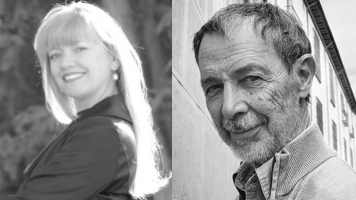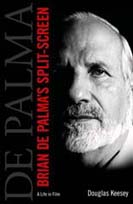PRODUCTION DESIGNER & CINEMATOGRAPHER BOTH WORKED ON 'PASSION'
 Thanks to Lear for pointing us to the listings for Brian De Palma's Domino at the IMDB, which was just updated again today to the status of "filming." The page lists two taglines for Domino: "The best weapon against an enemy is another enemy." And, "Revenge doesn't stop." But the real news here is that José Luis Alcaine is listed as the cinematographer, and Cornelia Ott is listed as the production designer. Both had worked in the same respective roles on De Palma's most recent film, Passion. Listed as first assistant director on Domino is Nick Shuttleworth, who has worked on many of Paul Greengrass's tense thrillers.
Thanks to Lear for pointing us to the listings for Brian De Palma's Domino at the IMDB, which was just updated again today to the status of "filming." The page lists two taglines for Domino: "The best weapon against an enemy is another enemy." And, "Revenge doesn't stop." But the real news here is that José Luis Alcaine is listed as the cinematographer, and Cornelia Ott is listed as the production designer. Both had worked in the same respective roles on De Palma's most recent film, Passion. Listed as first assistant director on Domino is Nick Shuttleworth, who has worked on many of Paul Greengrass's tense thrillers.Below is an excerpt from a December 2015 interview with Alcaine conducted by Gorka Díez at Las Noticias de Cuenca, with Google-assisted translation:
You’ve spent 50 years as director of photography. How do you keep up with it?It's quite simple: it's about tackling everyday problems that you may have and trying to solve them as best as possible, not try to do the same thing you've done, but always look forward. That is the way to keep up, and it happens with all professions. Somehow it is also about being at ease in the profession you have, something important over the years: it makes you come up with new things and solutions every time and allows you to bring a seemingly young spirit to all the films for which they call you.
Is there a single label of José Luis Alcaine in the films on which you’ve worked? Or is it more complicated because there have been so many?
It's difficult but it's about always making a movie whose photography is not too powerful, mine, but one that fits the needs of the film. I want to be in second term, in the service of the film. And I run from the genres. If they offer me a horror movie I do not try to make a horror movie, but a photograph that is quite recognizable and everyday so that terror can enter people's lives saying, "Damn, this could happen to me!". An example is ‘Se puede matar a un niño', Chicho Ibáñez Serrador, which is about absolute terror and occurs in August on an island that could be Ibiza. Chicho wanted a film of great shadows on the walls, which frightened the public, and I said no, I had to make a daily film, where things happen that shake and suddenly shake and hope that that does not happen to you. In 'The Skin I Live In', a thriller, I tried not to create the picture of a normal thriller, but a recognizable environment for the viewer with small details of terror or threat, which surprises more…
…
…How is the relationship with the directors? Because it can be complicated ...I do not influence them at all. I simply try to listen to what they propose and try to be as practical as possible, without getting in the way because directors should not be moved too much away from the way they’ve plotted. The only thing that has to be preserved is that it is a living movie. John Ford said at the end of his life that what he was most proud of in his films were the things that were not expected to happen and changed the meaning of the film. Because that, normally, is the life that bursts into the movie.
Being called back by the same director must be a satisfaction ...
It is always a good sign. It means that they had a good time on the set, first of all, and they liked the job I did. And to repeat with really creative directors is always important. But it's also important to be suddenly called by a director you've never worked with and who tells you that he wants to work with you because he likes what he has seen of you. That was the case with Brian De Palma, who called me and told me that he thought that I was one of the best cinematographers at illuminating the actresses of the world. It's something that impresses a lot.
Updated: Sunday, June 11, 2017 7:18 PM CDT
Post Comment | View Comments (1) | Permalink | Share This Post




